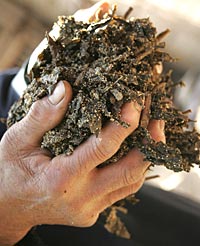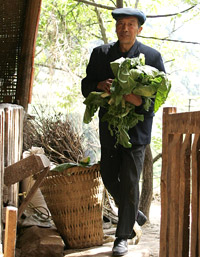The most comprehensive and authoritative web-based resource on the nutritional values of livestock feeds in African agriculture has just been launched.
This month sees the launch of the ‘Sub-Saharan Africa Feed Information System’. This new web-based resource provides free access to a comprehensive database providing the nutritional values of feedstuffs used by small-scale farmers in 14 countries in sub-Saharan Africa. SSA Feeds provides data on 14,571 samples of 459 livestock feeds, including herbaceous forages, fodder trees and shrubs, cereals and legumes, roots and tubers, other food crops, concentrate feeds and agro-industrial by-products, mineral supplements and other less common feeds. These feeds were analyzed in the animal nutrition laboratories of the International Livestock Research Institute (ILRI) in Addis Ababa, Ethiopia, and the information made available through an initiative of the Systemwide Livestock Programme (SLP) of the Consultative Group on International Agricultural Research (CGIAR).

SSA Feeds: Authoritative, comprehensive and freely available online
This unique resource is the culmination of 26 years of extensive research and data collection. The newly launched product makes available twelve years of initial data collection that started in 1981. This resource is now being updated with thousands of additional entries encompassing 14 years of subsequent research. This makes SSA Feeds the Web’s most comprehensive and authoritative resource on the nutritional values of livestock feeds in African agriculture.
Salvador Fernández-Rivera, a Mexican livestock nutritionist based at ILRI’s principal campus in Addis Ababa, Ethiopia, who coordinates SSA Feeds, is excited. ‘This is the first time that we have pulled together more than two decades of our research on animal feeds. SSA Feeds will be an invaluable resource for extension and development agents as well as livestock researchers. SSA Feeds will help them design optimal and scientifically based feeding systems for meat, dairy and draft animals. Better nourished and healthier livestock will enable Africa’s small-scale farmers improve their food and economic security.’
What the experts have to say about SSA Feeds
SSA Feeds was developed in conjunction with world experts in animal nutrition. These experts are already using the new resource and benefiting from having access to such depth and breadth of critical information on African animal feeds.
Adugna Tolera, an expert in animal nutrition and associate professor at the University of Hawassa, Ethiopia, advises his country’s feedlot industry on use of local feed resources.
SSA Feeds is an important and rich source of information on the nutritive value of a wide range of sub-Saharan African feed resources. It is user-friendly for searching and summarizing the data on a given feed and enables the user to see the average value as well as the variability (range and standard deviation).
|
It would be useful if the database were further enriched by including similar data accumulated in many of the national agricultural research systems in this region of Africa.
—Dr Adugna Tolera |
Hank Fitzhugh, former director general of ILRI and its Addis Ababa-based predecessor, the International Livestock Centre for Africa (ILCA), is an animal geneticist and livestock production systems specialist. He is leading a project to improve meat and livestock exports from Ethiopia. The project, which is funded by the United States Agency for International Development (USAID) and implemented by Texas A&M University, will fund the upgrading of the SSA Feeds database.
|
SSA Feeds demonstrates impacts from research.
This important database moves over 20 years of research off the shelf and into use by African livestock producers responding to the ‘livestock revolution—the huge increase in demand for meat and milk by consumers in developing countries. — Dr Hank Fitzhugh |
David Hutcheson is a worldwide expert on beef cattle nutrition, involved in projects in several countries in Africa, Asia and Latin America. With a long and distinguished career in the university system and US beef industry, he also served on the Committee of the National Research Council (NRC) of the United States that established the current “Nutritional Requirements of Beef Cattle".
|
I have used SSA Feeds to develop a “Best Cost” ration concept for Ethiopia Feedlots. The database is user friendly and easily adapted to the “Best Cost” Excel program. The arrangement of the nutrient analyses and summary statistics allow for easy manipulation and export of the data into different programs, for applications in both research and producer situations.
— Dr David Hutcheson |


.jpg)






